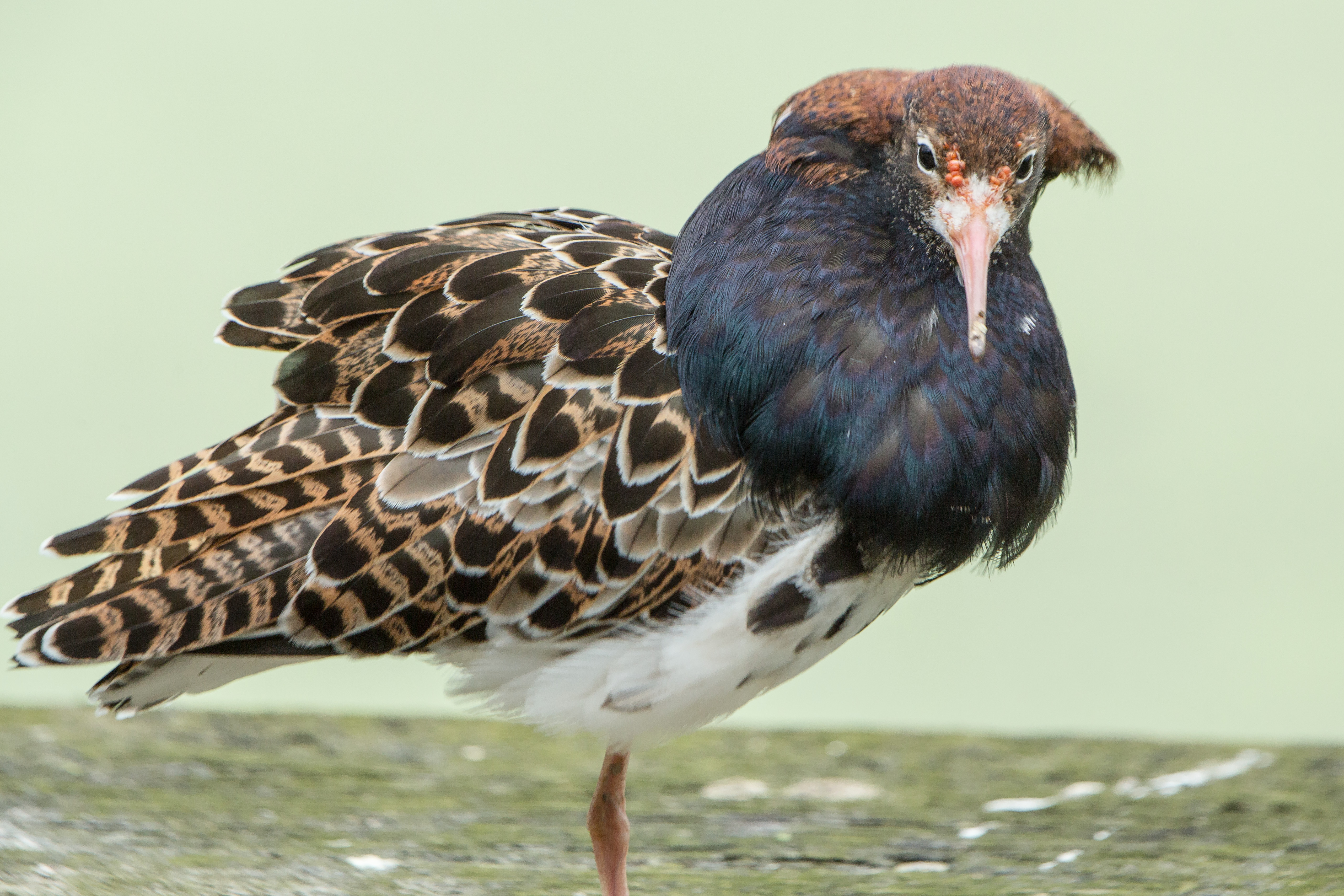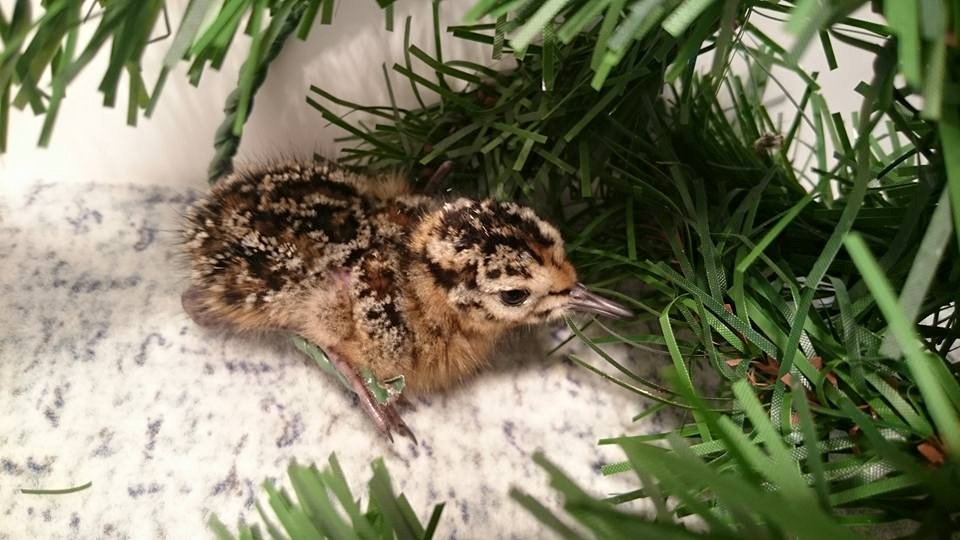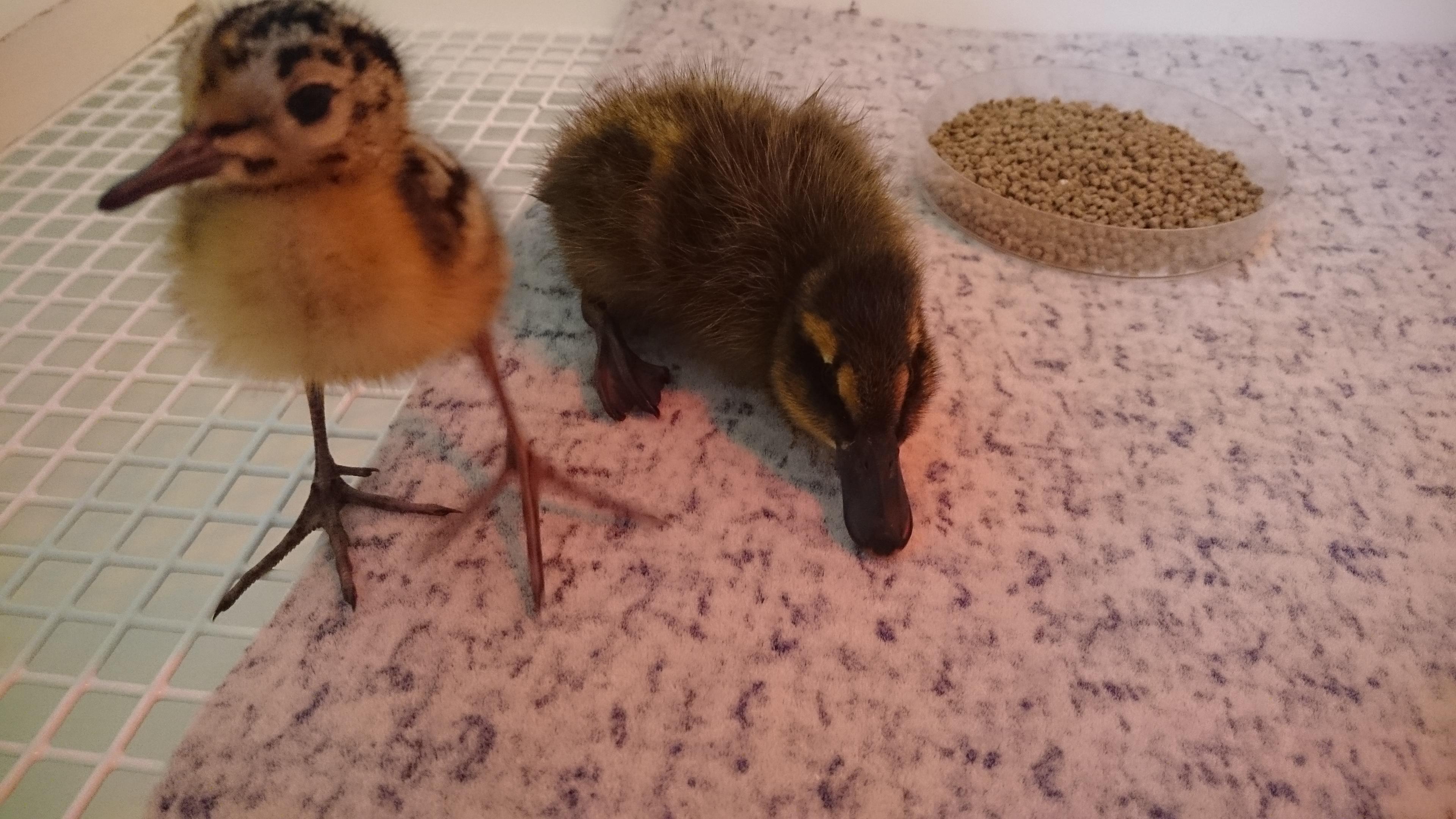The ruff - not so ridiculous after all!
This #WildfowlWednesday we thought we’d focus on ruff; one of the most spectacular, weird and wonderful birds to visit the WWT Slimbridge reserve. The ruff is a passing migratory wading bird that you can find on the reserve this month. The name ‘ruff’ describes the summer breeding feathers of the male who have a large collar of feathers around the front and sides of the neck.
We also have a small group of ruff on display in our wader shore exhibit whom look spectacular in their breeding feathers in the summer. Ruff also have one of the most elaborate and unique breeding displays in the animal kingdom!
 An adult male ruff in breeding plumage.[/caption]
An adult male ruff in breeding plumage.[/caption]
Elaborate and unique breeding displays
Ruff form a lek, which is a territory held by a dominant male.
There are three types of male plumage types:
- Independent male – black ruff
The one we see most commonly is the “independent” male with the black ruff neck plumage. These males hold a territory and display to attract the attention of females. Within this territory however the independent male may also allow the presence of a “satellite” male.
- Satellite male – white ruff
These satellite birds have a white ruff. They do not form territories, and instead hope to attract and mate with females which have been attracted to the independent male’s territories when he is not looking! They are opportunists.
- The faeder – female colouring
Even more amazingly, lastly there is the “faeder” male, whose plumage replicates female plumage. These males strategize to mate with females by falling under the radar of the other two through mimicry! To “make up” for their subtle feminine strategy, they are even more macho!
Ruff truly are the most amazing strategists, and without going into detailed genetics you can already see the effort they go to in order to spread their genes around.
Come and see our ‘independent males’ in our wader shore exhibit
Both of the males in wader shore are currently in their winter moult plumage, but in the summer both of our males are “independent” black-ruffed males. This is a huge benefit because it means we can guarantee lots of competition posturing and display as they compete to lure the ladies to their side of the pen. When you get up close to them in our wader shore exhibit, you can see the fabulous feathers, tufts, and orange pigmented skin patches on their cheeks.

Hand-rearing ruff and an unlikely friend
We have been lucky enough to hand-rear the species in recent years, and have cherished looking after them. In 2014 we only had one fertile ruff egg, and in a desperate attempt to give the fluffy ruff chick some company, it was reared with a black-headed duck for a couple of weeks before graduating to pastures new.

Ruff facing decline
Ruff are declining heavily in Europe, potentially due to changes in land-use and drainage. They remain a species of least concern on the IUCN red list due to large numbers in Scandinavia and the Arctic. The reality for us however, is that seeing a glorious ruff may become harder and harder to achieve as years progress.

Managing our reserve for wading birds
Our reserve team work incredibly hard to make our reserve and paddocks as attractive for migrating wading species as possible. Through major events such as our recent Seven Wader Festival we are hoping to raise the profile of these amazing birds and promote their beauty and habitat need.

Wild ruff can currently be seen from several of our hides, please check our twitter pages for daily sightings and recommendations.

a

